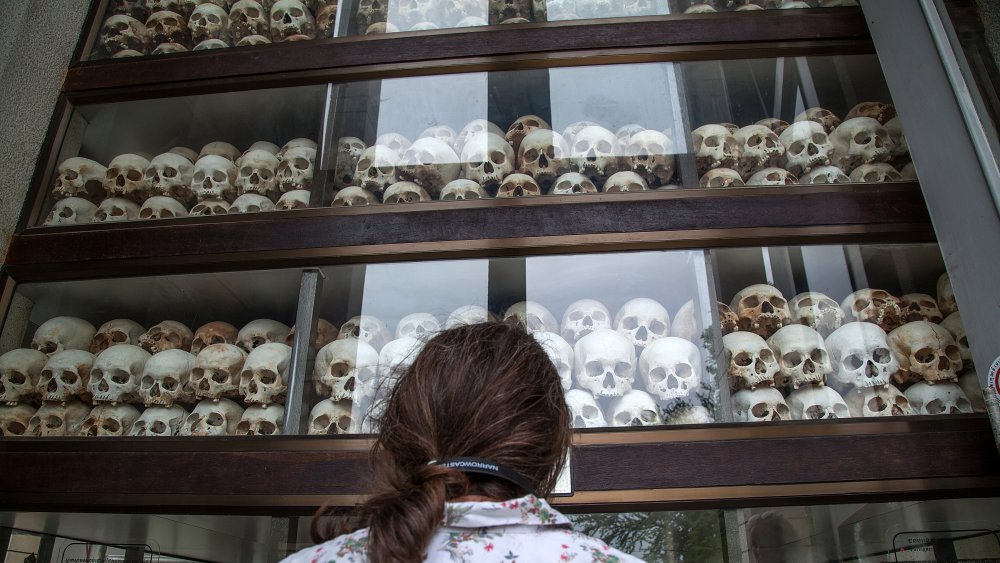“Hell on Earth.” That’s how the Chicago-based Cambodian sculptor Narath Tan described his home region, Pursat, to Bruce Sharp. Tan points Sharp’s attention to a carving: “The carving has split apart as the clay has dried; in the center, the body of a beautiful apsara — a dancer — is cracked and broken,” Sharp writes. “The cracks are deliberate. ‘This,’ Tan explains, ‘is like my country, from 1975 to 1978,'” the years of the Cambodian genocide, in which over a million people were killed and buried by the Khmer Rouge in over 20,000 mass graves.
The Khmer Rouge, Cambodia’s communist party, came to power during the United States bombing campaign in April 1975. By May 1975, The Guardian had started to report that the new Cambodian government was moving millions of citizens from Phnom Penh, the capital, to work in rural collectives. By August, their editorial writers were noting that the Khmer Rouge were engaged in an “ultra-dogmatic attempt to make all society rural.” By February 1976, reports were emerging from Cambodia that the government had resorted to using executions as a form of control: “Every disappearance, from village, factory or town, is assumed to have ended in death in some forest clearing or at some river edge.”
In full: https://www.grunge.com/235670/the-tragic-real-life-story-of-the-killing-fields/
